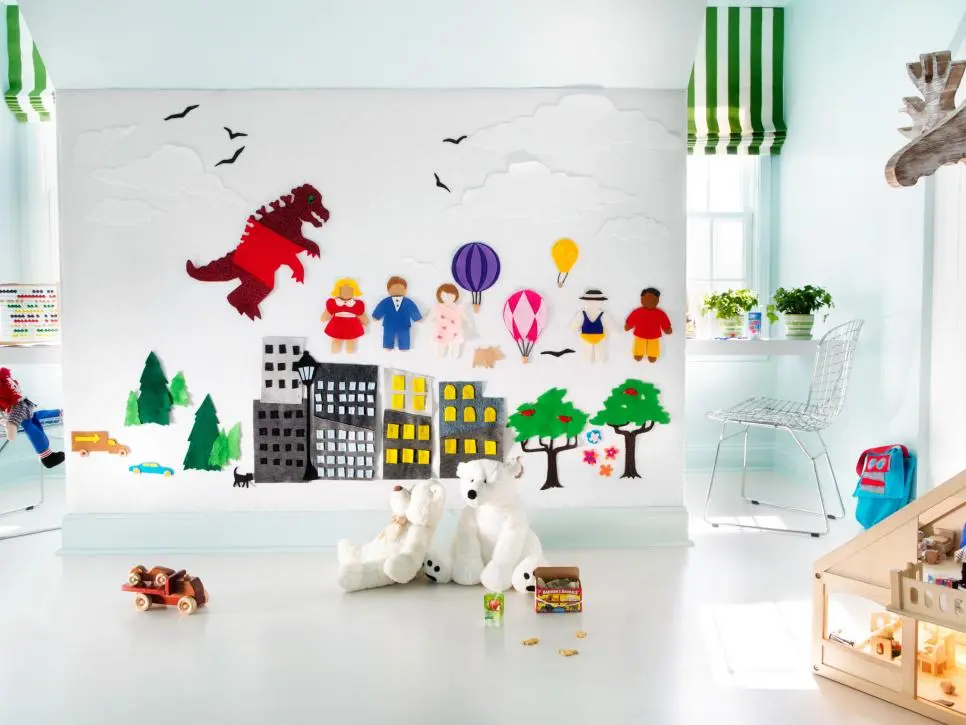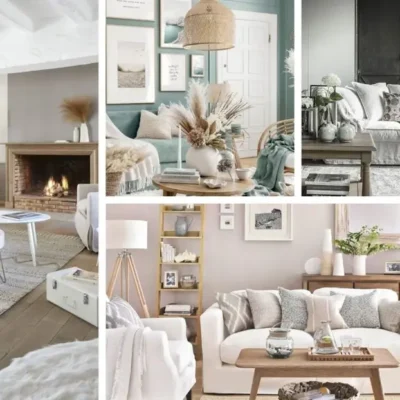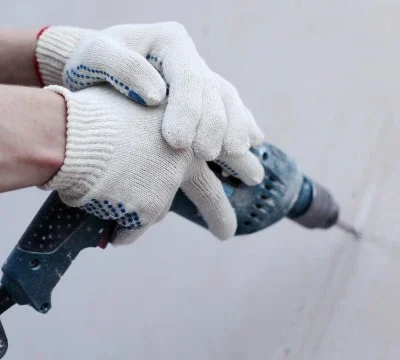Decorating a child’s room is a fun and exciting task, but it can also be overwhelming. With so many ideas and themes to choose from, it can be difficult to know where to start. Whether you’re decorating a nursery for a new baby or updating your child’s existing room, there are many creative and practical ways to make the space both functional and visually appealing.
How can I decorate my kids room at home?
Decorating your kids’ room at home can be a fun and creative project. Here are some tips to get started:
Choose a theme – A theme can make decorating easier and more fun. Ask your child what their favorite color, character, or interest is and choose a theme that reflects that.
Use color – Color can brighten up a room and make it more playful. Choose bright, bold colors or soft pastels, depending on your child’s preference.
Add personal touches – Display your child’s artwork or create a photo gallery wall to make the room feel more personal.
Incorporate storage – Kids’ rooms can quickly become cluttered with toys and clothes. Use shelves, bins, and under-bed storage to keep everything organized.
Create a cozy reading nook – Encourage reading by creating a comfortable reading nook with a soft rug, bean bag chair, and shelves for books.
Also read: 8 Cozy Bedroom Ideas to Create Your Own Relaxing Retreat
How can I decorate my kids room cheaply?
Decorating a kids’ room doesn’t have to be expensive. Here are some ideas for decorating on a budget:
Use paint – A fresh coat of paint can transform a room without breaking the bank. Choose a bright, playful color or use stencils to create a fun design.
Repurpose furniture – Instead of buying new furniture, consider repurposing items you already have. Paint an old dresser or use an old bookshelf as a toy storage unit.
DIY decor – Create your own kids room wall decor or decorations using inexpensive materials like construction paper, yarn, or fabric.
Shop secondhand – Check out thrift stores, garage sales, and online marketplaces for affordable decor items like lamps, rugs, and curtains.
Use removable wall decals – Removable wall decals are an affordable and easy way to add visual interest to a room without committing to a permanent design.
How to decorate a small kids room?
Decorating a small kids’ room can be challenging, but there are ways to make the most of the space. Here are some tips:
Choose multipurpose furniture – Use furniture that serves more than one purpose, like a loft bed with a desk or a storage ottoman that doubles as seating.
Use vertical space – Install shelves or bookcases that go all the way up to the ceiling to maximize storage space. Hang hooks for clothes or bags.
Keep it simple – Don’t overcrowd the room with too many decorations or furniture pieces. Choose a few key items that will make an impact.
Use light colors – Light colors can make a room feel larger and more open. Choose soft pastels or white for the walls and bedding.
Create storage solutions – Use under-bed storage, over-the-door organizers, or storage bins to keep toys and clothes organized and out of the way.
How to decorate kids room in school?
Decorating a classroom or school space can be a fun way to create a welcoming environment for kids. Here are some ideas:
Create a reading corner – Set up a cozy reading corner with pillows, bean bags, and shelves of books. Add a colorful rug to define the space.
Display student work – Create a bulletin board or gallery wall to display student artwork, writing, or photos.
Use educational posters – Hang posters with educational content like multiplication tables, maps, or science diagrams.
Use color – Use colorful accents like curtains, rugs, or wall art to brighten up the space and create a playful atmosphere.
Incorporate plants – Plants can add life and color to a space, and they can also help purify the air. Choose low-maintenance plants like succulents or spider plants.
In this article, we’ll explore some ideas for decorating kids’ rooms to help inspire you.
Ideas to decorate kids room
Create a Theme
One of the easiest ways to decorate a child’s room is to create a theme. A theme can be based on your child’s interests, favorite colors, or even a specific season or holiday. For example, if your child loves animals, you could create a jungle or safari theme. Or, if your child loves the beach, you could create a nautical or beach-themed room.
Use Color
Another way to add visual interest to a child’s room is to use color. Bright, bold colors are often popular with kids, but you could also consider using softer, pastel shades for a more calming effect. You can use color in a variety of ways, such as painting the walls, adding colorful bedding or curtains, or incorporating colorful accessories like rugs, pillows, or wall art.
Make it Personal
A child’s room should reflect their personality and interests, so don’t be afraid to incorporate personal touches. You could hang up your child’s artwork or create a gallery wall of family photos. You could also add a chalkboard or bulletin board where your child can display their favorite quotes, photos, or mementos.
Consider Storage
Kids tend to have a lot of toys and clutter, so it’s important to incorporate adequate storage in their room. You could use bookshelves, toy bins, or storage ottomans to keep toys and books organized. Consider using closet organizers or under-bed storage for clothing and shoes. And, if space allows, a small desk or table can provide a dedicated space for homework or crafts.
Create a Cozy Reading Nook
Encouraging a love of reading is important for children, and creating a cozy reading nook can help make reading more enjoyable. You could create a reading nook by adding a comfortable chair or bean bag, a soft rug, and some shelves for books. If space allows, a small tent or teepee can provide a cozy and fun reading nook for kids.
Add a Fun Accent Wall
An accent wall can add visual interest and depth to a child’s room. You could use a bold wallpaper, a fun mural, or even paint a mural yourself. You could also create a DIY accent wall by using stencils, washi tape, or decals.
Incorporate Lighting
Lighting can play a big role in the ambiance of a child’s room. You could use a fun and playful lamp or string lights to add a cozy, warm glow to the room. You could also consider adding a nightlight to help soothe your child to sleep.
Make it Interactive
Incorporating interactive elements in a child’s room can help foster creativity and imagination. You could create a dress-up corner with costumes and accessories, or add a small stage for your child to perform on. A chalkboard or whiteboard can provide a fun and interactive way for your child to draw and write.
Create a Focal Point
Adding a focal point to a child’s room can create a sense of balance and visual interest. You could create a focal point by adding a statement piece of furniture, such as a canopy bed or a unique dresser. Or, you could create a focal point with artwork or a gallery wall.
Don’t Forget About Safety
Finally, it’s important to consider safety when decorating a child’s room. Make sure all furniture is secured to the wall to prevent tip-overs. Keep electrical cords out of reach and use cord covers to prevent strangulation. Avoid using small decorations or items that could be a choking hazard for young children. And, if you’re using paint or other chemicals, make sure to use safe and non-toxic options.
Kids bedroom ideas for small rooms
Decorating a small kids’ bedroom can be a challenge, but it’s not impossible. With a few creative solutions, you can make the most of the space and create a functional and stylish room for your child. Here are some ideas for designing a small kids’ bedroom:
a. Use multipurpose furniture.
Choose furniture that serves more than one purpose to save space. For example, a loft bed with a desk or a trundle bed with storage drawers underneath.
b. Use vertical space.
Make the most of the wall space by adding shelves or hanging storage solutions. This will keep the floor clear and make the room feel more spacious.
c. Keep it simple.
A cluttered room will feel smaller, so keep the decor and furniture simple and minimalistic. Use neutral colors on the walls and floors to create a clean and uncluttered feel.
d. Use light colors.
Light colors will make the room feel more open and airy. Consider using white or pastel colors on the walls and bedding.
e. Use mirrors.
Mirrors reflect light and make the room feel larger. Hang a mirror on the wall or choose furniture with mirrored surfaces.
f. Choose the right size furniture.
Avoid oversized furniture that will take up too much space. Choose furniture that is proportional to the size of the room.
g. Create a focal point.
Create a focal point in the room to draw the eye away from the size of the space. This could be a colorful rug or a bold piece of wall art.
h. Use wall decals.
Wall decals are a great way to add color and personality to a small space without taking up any floor space.
i. Create a cozy corner.
Create a cozy reading nook or corner in the room using a small armchair or beanbag. This will give your child a place to relax and unwind.
j. Make use of under-bed storage.
Use under-bed storage solutions to keep clothes, toys, and other items organized and out of sight. This will help free up space in the rest of the room.
Remember, a small space can still be stylish and functional with the right design choices. By making the most of vertical space, using multipurpose furniture, and keeping the decor minimalistic, you can create a beautiful and practical room for your child.
Kids room Design for two kids
Designing a kids’ room for two children can be challenging, especially if they have different interests or preferences. However, with some creativity and planning, you can create a space that is functional, fun, and suits both of your children’s needs.
Here are some tips for kids room design for two kids:
#1. Consider the age and gender of your children.
If you have a boy and a girl sharing a room, you may want to choose gender-neutral colors and decor. However, if they are both the same gender and have different ages, you may want to create separate spaces within the room, such as a play area for younger children and a homework area for older ones.
#2. Use bunk beds or loft beds.
Bunk beds or loft beds are great space savers for a room shared by two kids. This will give each child their own bed and save floor space for other furniture and activities.
#3. Create separate storage spaces.
Each child should have their own designated storage space for clothes, toys, and other items. This will help keep the room organized and avoid disputes over shared items. You can use dressers, bookshelves, or storage cubes to create separate areas.
#4. Choose a unifying theme.
If your children have different interests, you can choose a theme that incorporates both of their preferences. For example, if one child loves dinosaurs and the other loves unicorns, you could create a magical forest theme that includes both creatures.
#5. Use color to differentiate spaces.
You can use color to designate different areas of the room, such as one child’s bed area being painted blue and the other’s being painted pink. This will help each child feel like they have their own space within the room.
#6. Create a shared play area.
Even if your children have separate bed areas, it’s important to create a shared play area where they can play together. This could be a rug with toys, a play tent, or a small table and chairs for crafts and games.
#7. Incorporate personal touches.
Let each child add their own personal touches to the room, such as a favorite poster or photo. This will help them feel like the room is truly their own.
Remember to involve your children in the design process and ask for their input. By including them in the decision-making, they will feel more invested in the room and be more likely to keep it tidy and organized.
FAQ about Kid Room Decor Ideas
Here are some frequently asked questions about decorating a kids’ room:
Choosing a theme can be as simple as asking your child what their favorite color or character is. You can also consider their interests, such as sports, animals, or outer space. Look for inspiration on Pinterest or in children’s books and movies.
Use light colors on the walls and ceiling to create the illusion of space. Choose furniture that serves more than one purpose, like a loft bed with a desk. Use vertical space with shelves and hanging storage solutions. Keep the room clutter-free and use a few key decorations to create visual interest.
Make sure all furniture is secured to the wall to prevent tip-overs. Keep electrical cords out of reach and use cord covers to prevent strangulation. Avoid using small decorations or items that could be a choking hazard for young children. Use non-toxic paints and materials, and make sure the room is well-ventilated.
Use paint to freshen up the room and add color. Repurpose furniture you already have or shop secondhand for affordable pieces. Create your own wall art or decorations using inexpensive materials. Use removable wall decals for a fun and affordable design option.
Create a reading corner with comfortable seating and shelves of books. Display student work on a bulletin board or gallery wall. Use educational posters and bright colors to make the space fun and engaging. Incorporate plants for a natural touch.
In conclusion, decorating a child’s room can be a fun and exciting project. By incorporating a theme, using color, adding personal touches, and considering storage and safety, you can create a space that both you and your child will love. Remember to have fun and let your child’s personality shine through in the design.





